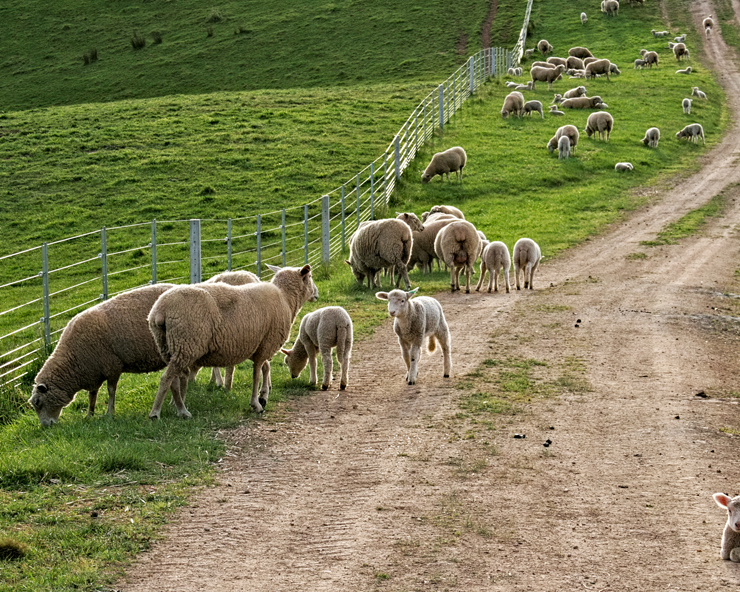As the weather gets warmer and the grass gets taller, we feed less hay and rely on our pastures a little more. With that comes essential management strategies to ensure pastures aren’t overgrazed and minimize potential risks to our livestock’s health. Two types of grazing systems are commonly practiced: continuous grazing, where livestock graze for extended periods in one area, and controlled grazing, where producers manage forage availability and quality. Within controlled grazing, there are many types of systems.
Controlled grazing
Controlled grazing systems are a powerful management tool to improve pasture health, maximize forage utilization, and increase livestock productivity. In these systems, management is intensified, closely monitoring the stocking rate and stocking density of land. In controlled grazing, livestock is strategically moved across smaller pastures to give plants time to rest and restore energy reserves. By managing this closer, the soil is better protected, improving forage quality. These systems also increase soil organic matter and improve water infiltration. Types of controlled grazing systems include:
- Rotational grazing: animals are moved through multiple pastures on a set schedule
- Management-intensive grazing: highly managed form where pasture moves are frequent, often daily, and stocking densities are controlled
- Rationed grazing: livestock are given controlled amounts of pasture each day using temporary fencing
- Strip grazing: animals are given access to narrow strips of fresh pasture daily
- Flash grazing: brief, high-density grazing of a pasture
- First – second grazing: two groups of livestock graze the same pasture in sequence; the high producers get the best forage, and the second group cleans up what is left
Forage selection
When selecting forages for your pasture, it is vital to identify key characteristics of a productive pasture, like a high leaf-area index, high plant density and diversity, continued growth through the season, and perennials. It is also good to remember that varietal differences can be huge, and no single plant can do it all. Management of cold-season and warm-season grasses is necessary to ensure the plants are hardy and produce the maximum amount of time to reduce the forage needed to supplement. To learn more about the productivity of grasses by month, refer to Pastures for Profit: A Guide to Rotational Grazing.
While good pasture management has many benefits, like high feed quality and reduced costs, pitfalls can damage plant, soil, and livestock performance in poorly managed systems. Factors like low dry matter intake, overgrazing, decreased production, internal parasites, and poor body condition can challenge farmers trying to graze their livestock exclusively. It is also important to supplement with minerals, especially for animals in late gestation or nursing young. No matter the grazing system, ensuring animals have easy access to clean water is essential. These systems don’t transition overnight, but with the proper management to develop high-quality pastures, producers can begin limiting grain and utilize supplements to maintain high-producing animals.
Resources
ISU Extension: Pasture Management: Optimizing Grazing and Fertilization
UM Extension: Grazing and pasture management for cattle

